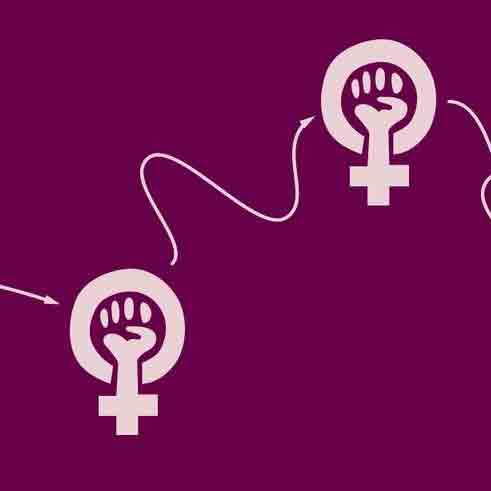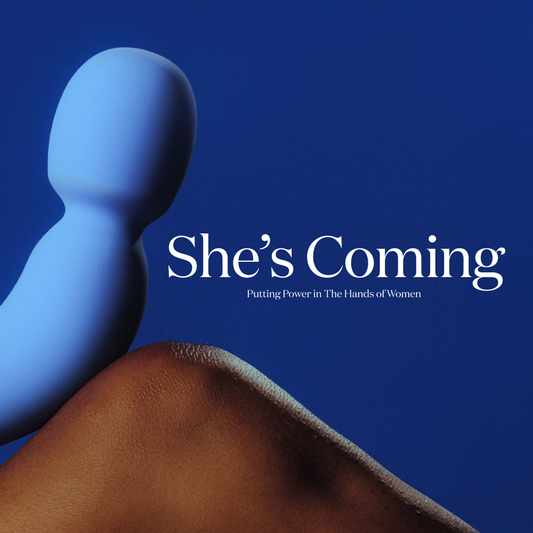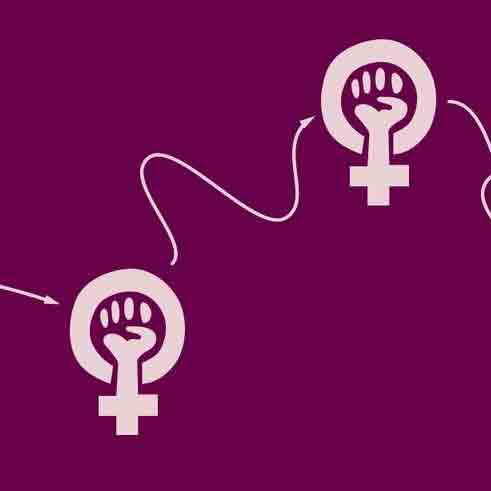As a gender scholar and an educator, I can’t count how many times I’ve heard sentiments like “gender is a social construct and sex is biological.” Meaning that gender is how we express and present ourselves and sex is a clearer, biologically determined binary: male or female. We sometimes even teach this in 101 classes to help students understand social construction.
But “sex” is also socially constructed. There’s nothing natural or intuitive about the parameters we use to determine whether or not someone is male or female at birth and throughout their lives. The categories themselves are human inventions. Most folks understand sex assigned at birth to be a pretty straightforward process: if the baby has a penis, it’s male; if it has a vulva, it’s female.
What’s tricky, though, is that human biology is messy, organic, and beautiful. It offers us a lot of variation in penis size, clitoris size, and other sex characteristics like chromosomes, secondary sex characteristics, hormones, and internal reproductive organs.
Some babies are born with larger clitorises or smaller penises (medically referred to as micropenises) and are immediately diagnosed with an intersex condition. According to the Intersex Society of North America, “intersex is a general term used for a variety of conditions in which a person is born with a reproductive or sexual anatomy that doesn’t seem to fit the typical definitions of female or male.”
In other words, “intersex” is an umbrella term to identify more than 30 different conditions that affect a person’s sexual and reproductive anatomy. Some are diagnosed at birth when the medical team notices variation in external genitalia; others find out later in life during puberty or when they have trouble with infertility. Some never find out. What can’t be stressed enough is that most intersex conditions are in themselves not harmful to one’s physical health and that, often, complications that do arise are caused by compulsory surgeries and treatments to correct an otherwise normal variation of human anatomy.
A Brief History of Intersex
Prior to the late 19th century, most intersex cases went unnoticed by legal, religious, and other medical communities and it’s assumed that folks with intersex conditions went on to live relatively average lives. By the late 1800s, though, the rise in the medicalization of childbirth combined with increasing gynecological studies led politically conservative medical experts to notice and pathologize otherwise normal variation in human gonadal and genital tissue, creating rigid guidelines for what it medically mean to be “truly male” or “truly female.”
Until the mid-20th century, the treatments for people who had intersex conditions were mostly social and psychological. Surgeries to alter the appearance of genitalia, especially on children and infants, were generally avoided due to safety concerns. For much of the 20th century, the medical community treated intersex conditions with a concealment-centered approach, meaning that they downplayed these biological variations as much as possible.
Beginning in the 1950s, psychologists and physicians began to follow a model created at Johns Hopkins University called the “optimum gender of rearing” model. This basically called for a physical, social, and psychological alignment of gender in treating intersex conditions, hoping to eradicate these variances altogether.
Because many thought it was more difficult to engineer a penis than a vulva and vagina, most babies were made as feminine as possible, physically through surgery and endocrinology, and psychosocially through how they were raised. Many physicians even encouraged lying to patients about their bodies and childhood treatments in hopes that they and their families would go on to live “normal” lives that fit neatly within the binaries of sex, gender, and sexuality.
This was often not the case, and sadly many people who had been deceived and treated without their informed consent went on to suffer from serious mental and physical health problems. This all changed when feminist biologist Anne Fausto Sterling essentially exposed intersex conditions in her publications in The Science and The New York Times in 1993, shedding light on normal sex variations and empowering many, like the Intersex Society of North America, to organize and create groups that fight against deceptive and harmful practices to correct otherwise harmless conditions.
Many of these groups are still fighting for acceptance and normalization to this day; however, they have had remarkable success in changing medical attitudes towards intersex conditions as well as creating visibility and support for intersex communities themselves.
How to Talk about Intersex
Terms like “hermaphrodite” are considered offensive and dated, although some are working to reclaim it. Some groups use the term “DSD” which stands for “difference of sex development,” or negatively, “disorder of sex development.” According to InterACT, an advocacy group for intersex youth, “some use
For example, a lot of people assume that intersex people are also LGBTQ and this isn’t always the case. While rigid sex and gender binaries certainly affect both the queer community and intersex people, it’s important to understand that intersex experiences are uniquely their own and many intersex people don’t identify as queer. Talk about intersex issues as you’d talk about any other human rights issue.
Because intersex people face medical violence to this day, it’s important to keep in mind that discussions of intersex existence are fundamentally discussions of basic human rights and bodily autonomy. Educate yourself! InterACT offers extensive resources like brochures, educational kits, and ally information, so spend some time getting to know the issues and support the voices of intersex communities.
Sex as a Spectrum
Most of us are thankfully coming to understand that gender and sexuality exist on spectrums, and that people’s relationships to these spectrums change throughout their lives. What we still struggle with, though, is the biological fact that sex also exists on a spectrum. Nature or biology doesn’t choose who counts as male or female—humans do, based on arbitrary standards created by politically conservative physicians during a time in human history when gender expression and sexuality were especially policed.
What nature does is offer humans a lot of complex and fascinating variation in how our bodies come to be, as our genital and reproductive tissue develops in utero and beyond. It’s normal and healthy for our sex characteristics to exist along a spectrum rather than in two neatly defined categories. To better explain the sex spectrum, the ISNA likens it to the color spectrum: nature creates infinite wavelengths that translate to colors, but the decision to distinguish between orange and, say, red-orange is made only when we need it or want it.
If we shift our thinking about sex categories away from a strict male/female binary, we are not only rejecting harmful myths about human biology, we are also taking yet another step in moving away from rigidly defined standards that normalize some and pathologize others.
In other words, we are freeing ourselves as a society from restrictive and harmful standards for our otherwise remarkably diverse mosaic of bodies and sexes. According to intersex model and advocate Hanne Gaby Odiele, “The ‘norm’ is not what you think it is.” While we still have a long way to go in terms of intersex visibility and acceptance, many can take heart in our unprecedented access to knowledge and community to continue the fight.




















































